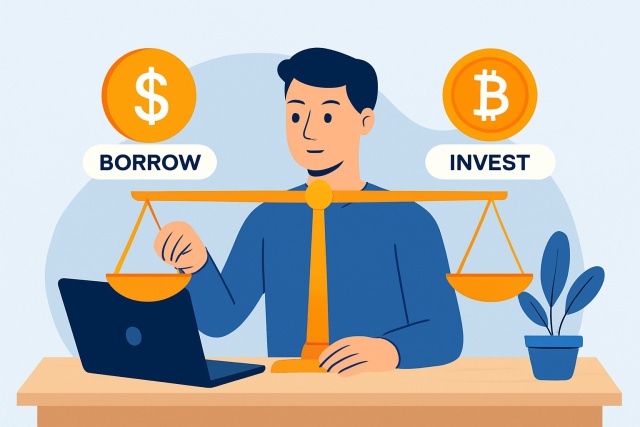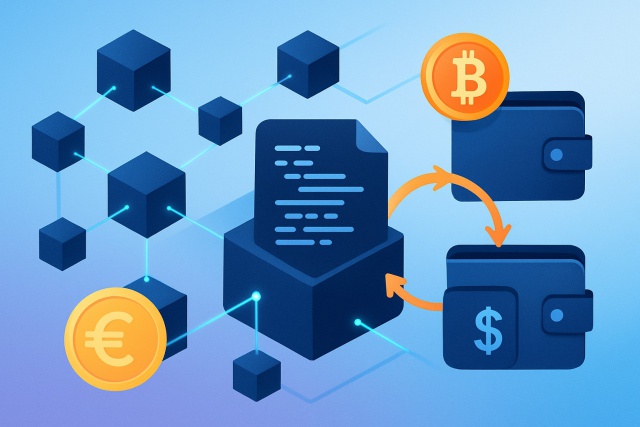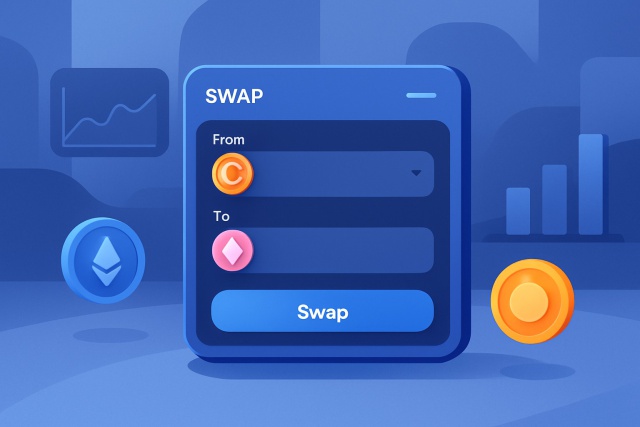What Does Staking Crypto Mean and How Does It Work?


Staking crypto plays a big role in decentralized finance (DeFi) even if it might seem daunting when you first dive in. In this article we break down what staking means, why it is a big deal and how the whole process works behind the scenes.
What Does It Really Mean to Stake Crypto?
Staking crypto means locking up your digital assets like cryptocurrencies to help keep a blockchain network humming along. Instead of just sitting on your crypto or trading it occasionally, staking involves actively putting your tokens to work by securing the network and validating transactions. Sometimes, you even have a say in how things run. When you stake your crypto, those tokens are typically locked away for a set period, so no sneaky selling or spending until the timer runs out.
Staking is a bit like tucking money away in a savings account where it slowly rakes in some interest. Or imagine renting out a property: you lock up the asset and get some steady rental income in return.
- Staking essentially means locking up your cryptocurrency to help keep the blockchain running securely and smoothly.
- It’s a great way to earn some passive rewards or interest simply by holding onto your tokens, kind of like letting your money do some light gym work while you relax.
- When you stake your tokens, you contribute to confirming new transactions and preventing any sneaky fraud or double spending attempts.
- This method replaces energy-guzzling mining rigs with a more eco-friendly approach that relies on financial commitment instead of sheer computing power.
- Plus, staking isn’t just about rewards. It also promotes decentralized governance by allowing token holders to have their say on important network decisions.
Understanding Staking in Proof-of-Stake (PoS) Blockchains A Friendly Guide
Proof-of-Stake blockchains rely heavily on staking as the backbone of their consensus method and move away from the energy-intensive mining process. Validators lock up their crypto as collateral and earn the chance to verify transactions and add new blocks to the chain. If they follow the rules they receive new tokens, but if they slip up penalties are applied.
Validators get picked to create new blocks based largely on how many tokens they have staked so naturally those with heftier stakes carry more weight in the process.
Once chosen, validators double-check and confirm transactions to keep the whole network honest.
Validators who play by the rules get rewarded with extra cryptocurrency tokens—like a tip for a job well done.
If validators try to act maliciously they face slashing which means a chunk of their staked tokens gets snatched away.
Those tokens stay locked up during the staking period which cranks up security and keeps naughty behavior in check.
Proof-of-Stake (PoS) operates quite differently from Proof-of-Work (PoW), which notoriously gobbles up massive amounts of energy and computing muscle. PoS leans on financial incentives by having participants put their money where their mouth is through staking.
What Really Goes Down When You Stake Crypto, Step by Step
Staking crypto usually kicks off by choosing the cryptocurrency you want to put on the line. Then, you deposit your funds into a staking platform or node and lock them away for a set period—no peeking allowed. After that, the rewards start rolling in on a regular basis.
Choose the cryptocurrency you want to stake and make sure your wallet supports it.
Move your tokens to a staking platform, a validator node, or use a wallet that lets you stake without fuss.
Lock in your tokens for at least the minimum period required by the blockchain or platform—no shortcuts here.
While your tokens are locked, the network uses them to help validate transactions.
As a thank you you’ll usually see staking rewards regularly, paid in the crypto you staked or a related token—a nice bonus for just letting things run.
You have a few staking options depending on how hands-on you want to be and what resources you have. Solo staking means running your own validator node and usually requires a hefty minimum stake. It is not for the faint of heart. Pooled staking lets investors combine their funds and gives everyone a better shot at rewards.
Popular Cryptocurrencies and Platforms People Actually Use for Staking
A handful of well-known cryptocurrencies come with some pretty neat staking opportunities. Ethereum 2.0, Cardano, Polkadot and Solana are the big names in the game that use proof-of-stake mechanisms. If you’re new to this, exchanges like Coinbase make it easy to dive in without running your own node.
| Cryptocurrency | Minimum Stake | Expected Annual Percentage Yield (APY) | Lock-up Period | Popular Staking Platforms |
|---|---|---|---|---|
| Ethereum 2.0 | 32 ETH | Typically falls somewhere between 4% and 7% | Can vary, but usually a few months | Coinbase, Kraken, Lido |
| Cardano (ADA) | 1 ADA | Usually in the ballpark of 4% to 6%, making it a solid choice | Pretty flexible | Binance, Daedalus Wallet |
| Polkadot (DOT) | 10 DOT | Often seen hovering between 10% and 14%, which definitely catches the eye | Flexible | Kraken, Polkadot.js |
| Solana (SOL) | 0.01 SOL | Generally offers around 6% to 8%, striking a nice balance | Typically ranges from a few days up to several weeks | Binance, Phantom Wallet |

Why Do People Stake Crypto? Unpacking the Perks and Pitfalls
Staking lets you earn some nice passive income by rewarding you for lending a hand in keeping the network secure.
It plays a key role in boosting blockchain security by encouraging individuals to stay honest and involved.
Plenty of staking protocols also hand token holders the power to vote on important decisions, which feels pretty empowering.
Unlike mining, staking doesn’t require expensive hardware or gulping down loads of energy.
Staking generally comes across as more environmentally friendly, especially when stacked up against those energy-hungry alternatives.
Locked tokens are usually off-limits while you are staking and this can put a bit of a damper on your liquidity.
Both your rewards and principal can be affected if the ever-volatile crypto prices decide to swing.
Validators aren’t off the hook either because they might face penalties like slashing if they slip up or have downtime. It is definitely not a walk in the park.
Putting your trust in staking platforms or protocols comes with its own headaches such as bugs or the lurking risk of hacking vulnerabilities.
Slashing is an automatic penalty that nicks a validator's staked tokens if they act up or forget to stay online when they’re supposed to. Think of it as a gentle but firm reminder to keep things honest and stay on their toes. This mechanism discourages bad behavior.
Staking rewards can be a pretty tempting way to earn some passive income, but it’s key to keep in mind the risks lurking beneath—things like lock-up periods and the chance of slashing penalties. Getting a solid grasp on these factors not only helps protect your assets but also plays a part in keeping the blockchain network running smoothly. Trust me, a little know-how goes a long way in this game.
Comparing Staking with Other Ways of Earning Crypto
Staking is one of several ways to earn income in the crypto world with its own unique blend of effort and risk. Mining, for instance, demands technical know-how and a hefty hardware investment. Yield farming might offer higher returns but is often a tangled web of complexity and added risk. Trading cryptocurrencies is hands-on, potentially profitable, and a real test of timing and emotional stamina.
| Income Method | Required Effort | Risk Level | Typical Returns | Technical Skill Needed |
|---|---|---|---|---|
| Staking | Low to moderate | Moderate | Generally 4% to 14% APY, not too shabby | Just a basic handle on wallets and platforms does the trick |
| Mining | High | High | Can swing all over the place depending on your gear and how the market's acting | You’ll need a solid, almost geeky understanding of mining rigs |
| Yield Farming | High | High | Often pretty juicy returns, sometimes topping 10% APY, but don’t get too cocky | Requires strong DeFi chops and hands-on attention, no autopilot here |
| Trading | High | Very high | Returns wildly vary—can make you or break you, so buckle up for volatility | A good grasp of market moves and trading tactics is a must-have |
Helpful Tips for Beginners Looking to Start Staking Crypto (Without Getting Lost in the Maze)
- Take your time to thoroughly research the staking protocols and cryptocurrencies before investing your hard-earned funds. It is always better to be safe than sorry.
- Make sure you fully understand any lock-up periods and withdrawal limits that might catch you off guard later.
- Start small so you can get a feel for staking without risking too much at once.
- Stick to reputable and trusted staking platforms or wallets because you want to keep your assets safe and secure.
- Spread your staking across different coins and platforms to manage risk and avoid putting all your eggs in one basket.
- Keep a close eye on your staking rewards and stay updated on any network changes. This is the best way to avoid surprises and stay ahead of the game.
If you're wondering what does staking crypto mean in practice, keeping up with network upgrades, sudden jolts in market volatility and the endless buzz around community governance usually gives you the upper hand. Jumping into forums and keeping an ear to the ground with official updates is a smart move.






